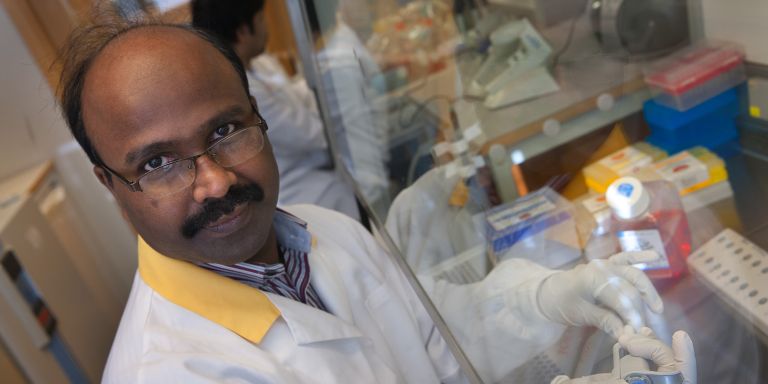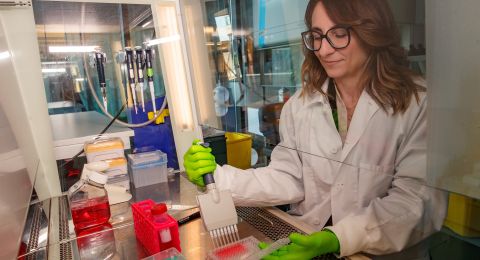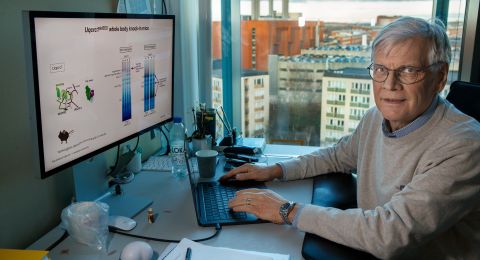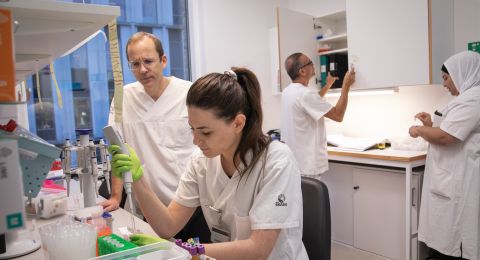
Project Grant 2014
Master regulatory long non-coding RNA molecules in cellular differentiation
Principal investigator:
Chandrasekhar Kanduri, Professor of Medical and Clinical Genetics
Co-investigators:
Anne Uv
Claes Gustafsson
Erik Larsson
Maria Falkenberg
Institution:
University of Gothenburg
Grant in SEK:
SEK 40.8 million over five years
There are DNA molecules inside the cells of all living things. They resemble long, ladder-like helical chains. They contain the genes that serve as blueprints for all proteins manufactured in the cell.
Those proteins are behind a large number of processes, such as those involved in metabolism and reproduction. When a protein is to be formed, the DNA molecule opens up at a certain gene, and the ladder splits lengthways. An enzyme reads the rungs of the ladder, and matches them with another type of molecule, known as RNA. RNA forms its own chain, an exact copy of the gene, which is transported out of the cell nucleus, and serves as a template for manufacture of the protein.
But in humans less than two percent of DNA codes for proteins, i.e. contains a blueprint. It was long thought that the rest of the molecule was some kind of waste material, “dark matter”, whose sole function was to protect the important parts. But in recent years, new technology has made it possible to map the RNA molecules in the cell more accurately. It has been found that more than 75 percent of the DNA strand is read and gives rise to RNA strands, but that only a small proportion of these build proteins. The rest is called non-coding RNA.
Researchers surprised
“It came as a big surprise to us researchers. Just a few years ago, we were aware of about 15 examples of non-coding RNA. Suddenly there are many thousands. It is a revolutionary change. What do these molecules do? And how should we distinguish those that have a function from those that merely constitute ‘background noise’?”
Chandrasekhar Kanduri is a professor at the University of Gothenburg. He and his colleagues are studying long non-coding RNA molecules in a project funded by the Knut and Alice Wallenberg Foundation. There is ample evidence that most of them have some kind of function, although we do not know what. For instance, a certain RNA molecule may occur in some kinds of tissue but not in others, which suggests that it has a function relating to those specific tissue types. Another sign is that several of the molecules occur only at certain stages of cell development, e.g. during cell division. By using cell division as a model system, Chandrasekhar hopes to find clues about how cancer develops, since cancer is largely a matter of uncontrolled cell division.

Impact on cancer and dementia
“We are trying to find out when in the life of the cell long non-coding RNA molecules exist, and how their presence impact other genes. They seem to be able to turn genes on and off, which controls cell activity. At the moment we are studying just under 20 RNA molecules that we think play a key role in certain types of cancer and some neurological diseases, such as dementia,” says Chandrasekhar. He and his colleagues are working with doctors at Sahlgrenska University Hospital and Karolinska Institutet in order to have access to material from patients.
If the researchers can figure out the part played by the long non-coding RNA molecules in a disease, it may be possible to develop new drugs that affect the way those molecules behave. Or perhaps the molecules can be used as markers to show the stage reached by the disease, indicating the most appropriate form of treatment.
To understand the function of the long non-coding RNA molecules, the researchers are studying mice, in which parts of the DNA are suppressed to see what happens when certain RNA molecules are not formed. The team is also using human cells in the lab to study what happens during cell division when parts of the DNA are suppressed or removed.
No one knows how many non-coding RNA molecules there are. When this project started, the official figure was about 20,000. However, a couple months back, a scientific article was published claiming there might be 58,000 long non-coding RNA molecules. Chandrasekhar believes that the number will continue to change for some time to come. To date there is no database offering an organized presentation of all molecules discovered.
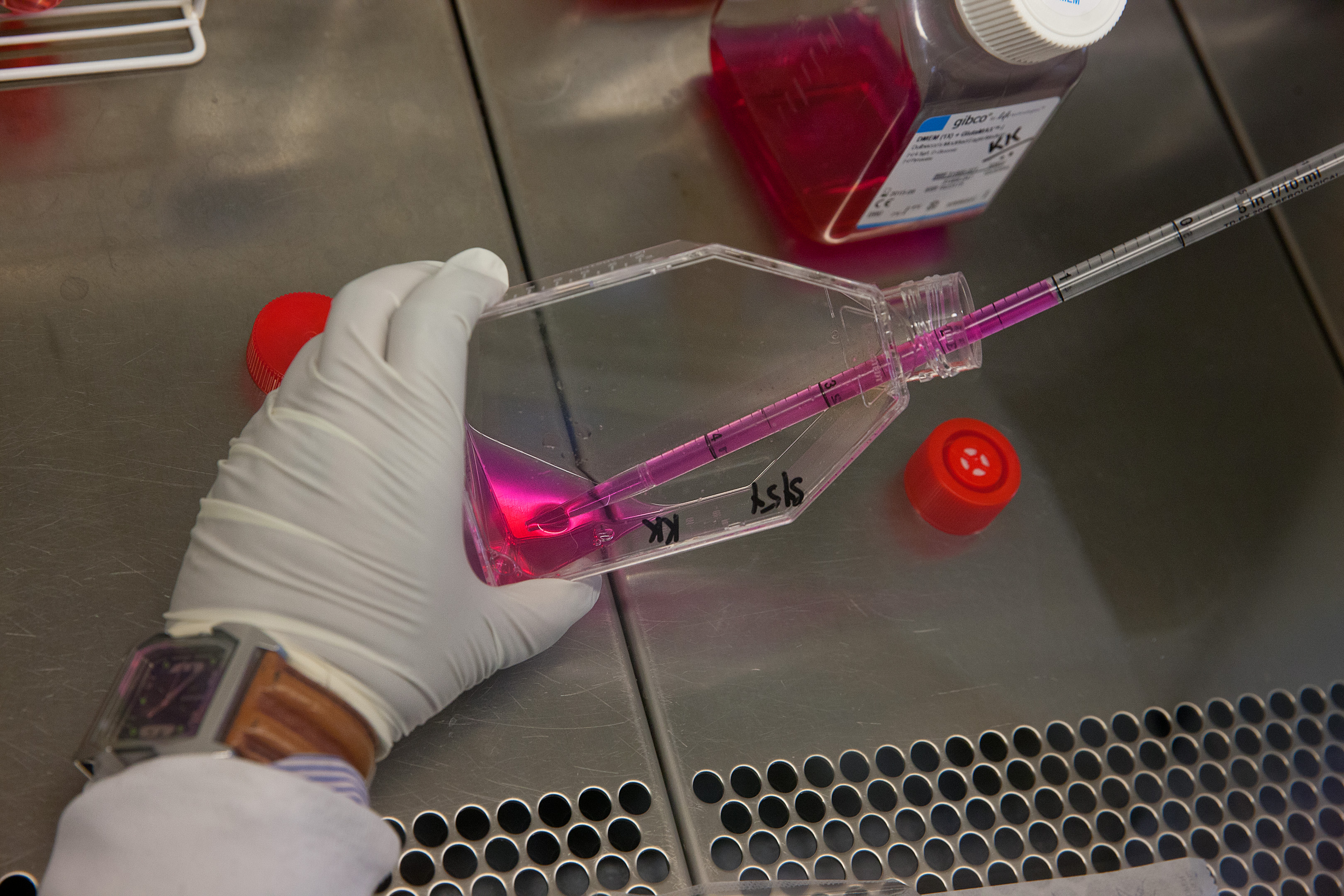
More non-coding DNA in higher organisms
What we do know is that vertebrates in general have more dark matter than plants, and much more than simple organisms such as worms or bacteria. Non-coding DNA likely explains the differences in complexity – it is definitely not the number of genes. For example, humans have just over 21,000 protein-coding genes, whereas the simple roundworm C. elegans, a common organism in genetic studies, has just over 20,000, and the water flea Daphnia pulex has 31,000.
Studying long non-coding RNA molecules is challenging in several ways. Only a tiny quantity of each molecule is usually present in the cells. In addition, many of these molecules are unstable and easily disintegrate. New techniques may be required to work with them. Chandrasekhar considers it difficult, but not impossible.
“Only a few years ago researchers did not believe in this field, but now interest is growing enormously, and numerous scientific articles are being written. We hope that our research using human cells and mice models will help us to understand how long non-coding RNA molecules involved in the development of cancers. This will in turn help us to find ways of treating cancer in humans as well.”
Text Lisa Kirsebom
Translation Maxwell Arding
Photo Magnus Bergström
